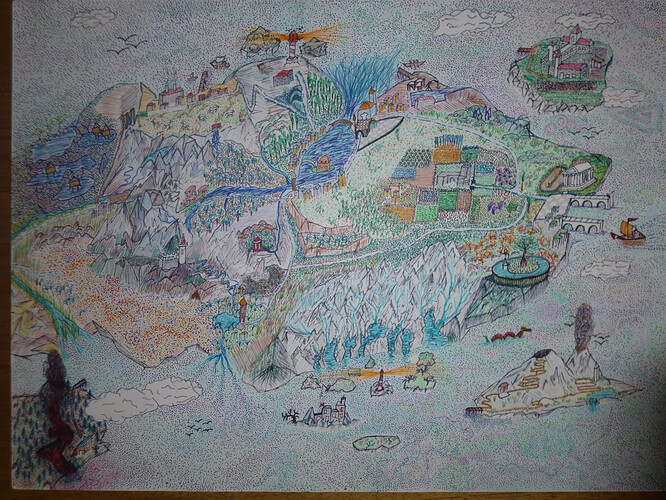Regarding the immediate question: The desktop app Trizbort and the online trizbort.io are separate projects by different people.
The desktop app is written in C# and is maintained by Jason Lautzenheiser, and the web version was based on the desktop version, but is written in TypeScript and is maintained by Alexander van Oostenrijk. I haven’t followed the development closely, but I think there are no plans to keep the versions strictly in sync. So, it might be well worth trying out both, to see if one of them offers features, usability, export capabilities that best suit your needs.
Personally, I’ve only used the desktop app up to now, since I’m on Windows and like to do stuff offline if possible, but maybe I’ll check out the web version some time.
I’ve used Trizbort to create a map while designing an I7 game, but I haven’t used its export functions yet. I think there were two reasons for that:
Reason 1
Inform 7, despite its natural language syntax, does not have much “boilerplate code”, or so it seems to me. The source code definitions which are used in I7 to define rooms (and the things in them) do not contain much superfluous text beyond the room and object names themselves:
“The Corridor is a room. The Library is east of the Corridor. The Kitchen is west of the Corridor. Colonel Windermere is a man in the Library. The mahogany table is a supporter in the Library.”
What I mean is that Trizbort’s export would not save much typing here, or at least not so much that it would be a compelling reason to use it (for me).
It would be different if we considered a language such as Java, which can tend to be quite verbose and has lots of boilerplate code (constructor, getters and setters, stuff like that for each and every class). If we attempted to write a text adventure in pure Java or a Java-like language, then I think Trizbort would really shine, because it could generate all that boilerplate code automatically. (IDEs for Java development, like Eclipse and IntelliJ, offer precisely that.) (Edit: Obviously, we would not turn each room into a class of its own, anyway. But I think it’s clear what I mean.)
Reason 2
The second reason is that the versions (in Trizbort and in I7) are bound to get out of sync after a short time. You’ll add rules in I7 to describe the behaviour of NPCs and objects, and in the course of that, you’ll probably also change the locations or names of some objects.
If you then decide to add a region with several more rooms and items, you can of course do that in Trizbort, but what next? You can export the map to a new I7 project, and merge the contents with a diff tool and an editor, but that would surely eliminate any time savings.
So, it might work well if you create the complete map and most of the items upfront in Trizbort (or just don’t care about the items), then export the map and switch over completely to I7 (or the language you’re developing in, of course). After that, only update the geography in Trizbort if you want to see a nice-looking map, but don’t use the export again. That’s of course a possible workflow, but then a) you need to do a lot of design work upfront to really gain something from the export function, or b) your map is not yet very big, then we’re back at point 1 - it does not save much typing.
I absolutely don’t want to sound negative here, I like Trizbort a lot and think it’s an impressive and really cool program! Just wanted to describe how, for me personally, the export functions did not become important. But maybe your workflow and preferences are different, so it’s definitely worth a try (maybe I’ll try it myself again).
I wish you the best of luck for your adventure! I remember reading about it on the Adrift forum, I thought that it sounded like fun and had a charming setting!



